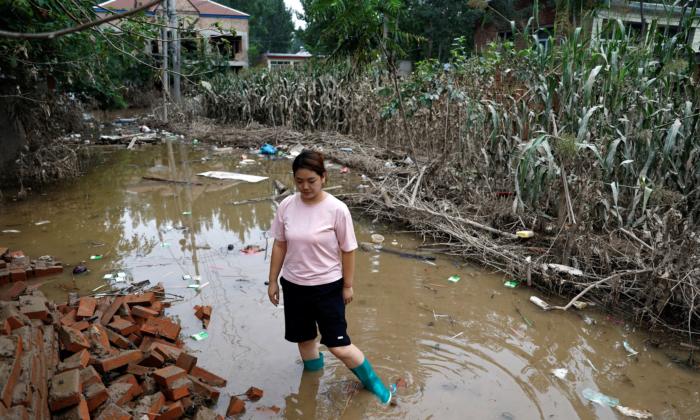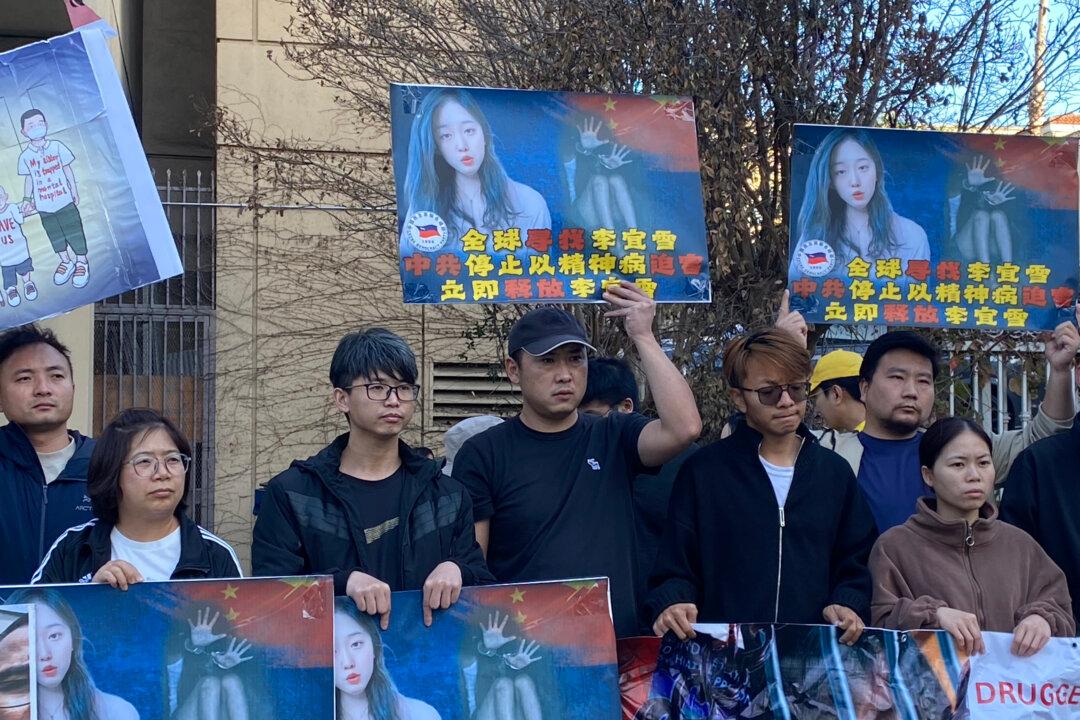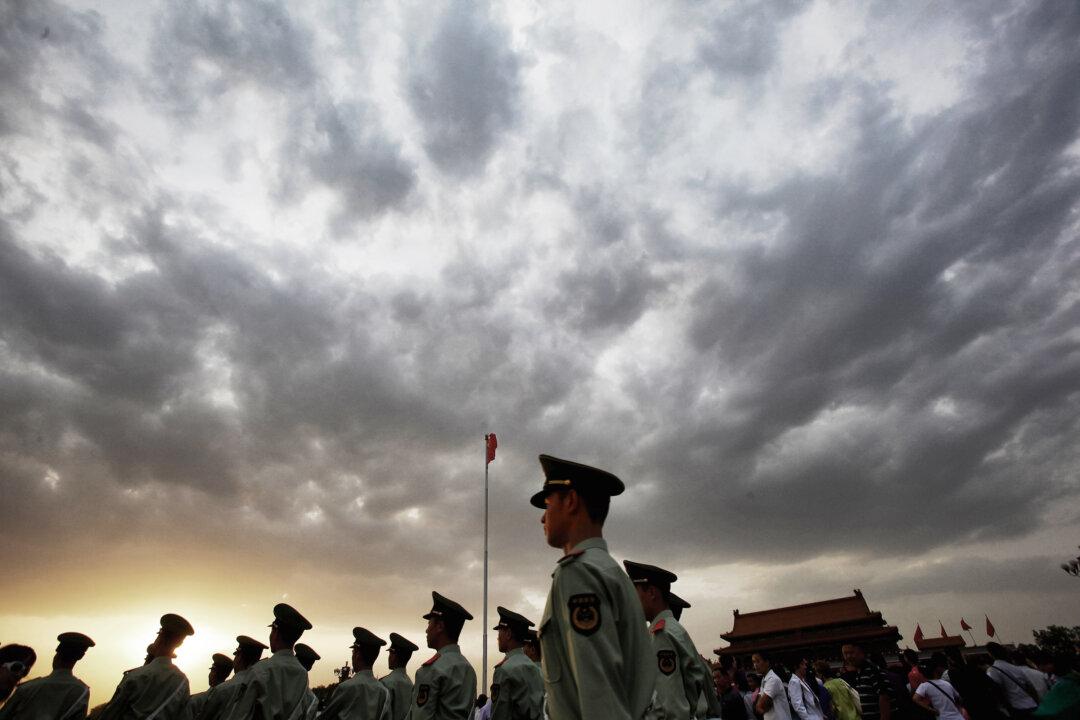Corpses have been found floating amid severe flooding in Hebei, northern China, according to local reports. Residents of Zhuozhou city said the casualties were so heavy that armed police had taken over the area to prevent news of the situation from spreading.
Li Li (a pseudonym), a villager from Shigou, said that what is shown in the video is real.
Shigou is still surrounded by floodwaters, and people have to pay for a boat ride to get in, Ms. Li told The Epoch Times on Aug. 26.
“The village is now a mess, with garbage all over the place. The water has turned black, smelly, and dirty, and there are mosquitoes everywhere. With water and electricity cut off, the villagers can’t go home to clean their houses,” she said.
Ms. Li was notified on July 31 to evacuate. She believes that the loss of life in her village is not too great, with only some loss of property.
However, Zhuozhou city, 90 miles away, is a different story. Wang Qiang (a pseudonym), an artist who lives in Zhuozhou, said that he had never received any notification of flood discharge or a request to evacuate.
In order to protect Beijing and Xiong’an New Area, many flood storage areas in Hebei Province were subject to flood discharge without warning. On Aug. 1, Zhuozhou city was flooded overnight.
“Most of the houses in the countryside are one-story cottages. Many of them were flooded to the top. The [flooding] area is very large. Ordinary people have no place to hide and no way to run,” he told The Epoch Times on Aug. 20.
The casualties in Zhuozhou were “particularly serious,” according to Mr. Wang, who heard from a friend who knows government officials that “5,000 people” had died in the city.
“If you hadn’t experienced it, you wouldn’t have thought that the flood would be so big. The speed of flooding is so fast!” he said.
The Epoch Times could not independently verify the death toll. The Epoch Times called the Zhuozhou municipal government for comment, but repeated calls were not answered.
According to public information, Zhuozhou city has a population of 655,000 people.
Armed Police Take Over
Despite the devastation from the flooding in northern China, there are few pictures or videos about Zhuozhou on Chinese social media, which may be related to a takeover of the area by the armed forces.According to Mr. Chen, a Zhuozhou resident, 500 people from the Armed Police Headquarters in Hebei Province entered Zhuozhou on Aug. 5.
“They took over the rescue work, and all civilian rescue forces were asked to withdraw,” he previously told The Epoch Times.
State media reported that the armed police left Zhuozhou on Aug. 14.

Wang Qiang believes that the mission of the Armed Police Force is actually to prevent the spread of information.
“Do you know why the army took over and allowed the civilian rescue teams to withdraw?” he asked.
“There is a discipline in the army that does not allow any video equipment to be taken with them. What you see and say with your mouth is not the same as what is captured on video and then broadcast to the outside world.”
“The civilian rescue teams, who have video equipment, will always send something out. That’s what the Armed Police Force came to clean up,” he said.
This aligns with what Hu Dudu, a Chinese dissident writer, posted on X, formerly known as Twitter, about a report on public opinion by the Chinese Communist Party’s (CCP’s) propaganda department.
“A public opinion inspector in our district found in his inspection that some rescue teams had ‘maliciously live-streamed’ images of the surrounding area during the rescue process, which ‘seriously damaged the image of our district,’” reads the post in Chinese.
Control of Coverage on Natural disasters
The control of public opinion on natural and man-made disasters is a crucial part of the CCP’s efforts to “maintain social stability,” which was also used during the Henan Province flooding in 2021.On July 20, 2021, flooding was triggered by extremely heavy rainfall in Henan. Local officials released floodwaters without warning. The water quickly overwhelmed Zhengzhou, the capital city’s Metro Line 5, and the Beijing-Guangzhou tunnel, victimizing a large number of people.
The CCP authorities sent troops to Zhengzhou to carry out “dredging work.” Double-section buses, heavily covered with black cloth, were seen being pulled out of the Beijing-Guangzhou tunnel, where the bodies of suspected victims were hidden.
After six months, the official investigation claimed that 380 people were dead and missing in Zhengzhou. The true number of deaths remains unknown.







